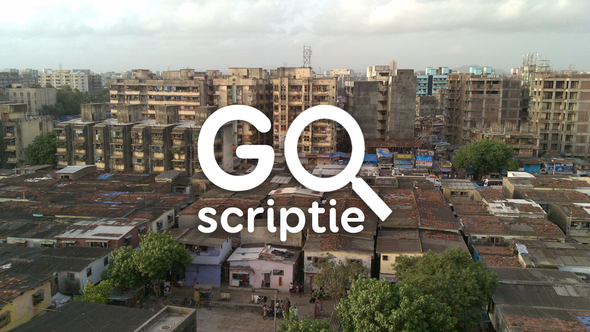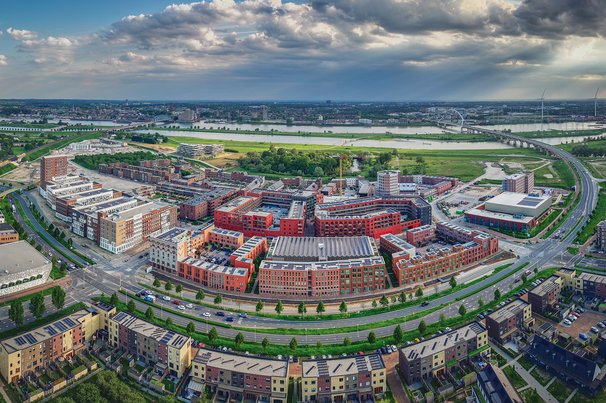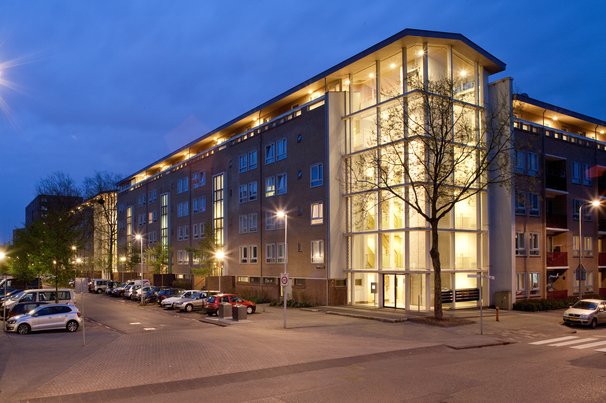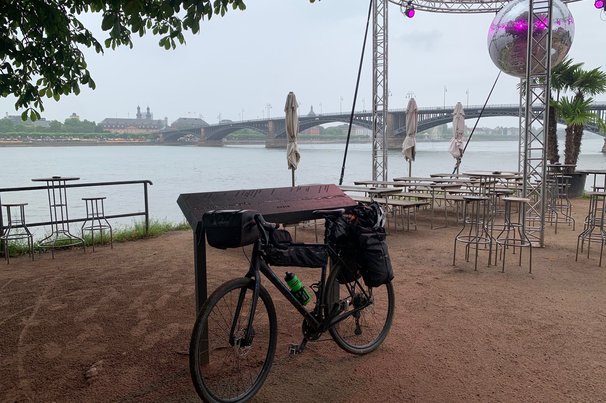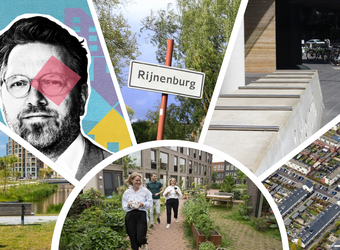Onderzoek Economische en sociale netwerken vormen een essentieel onderdeel in het dagelijks bestaan van informele nederzettingen in het zuidelijke deel van de wereld. Bij de (formele) herontwikkeling van deze gebieden blijft deze reeds bestaande economische en sociale bedrijvigheid vaak buiten beschouwing. Kritika Sha onderzocht in haar MSc-scriptie hoe een strategisch framework waarbij de bestaande sociaaleconomische productie van zulke informele nederzettingen verbonden wordt met de formele herontwikkeling ervan, op de lange termijn kan leiden tot inclusieve en duurzame herontwikkelingsprojecten. Zij focust zich op de stad Dharavi in India. Dit artikel is alleen in het Engels beschikbaar.
Case Study: Dharavi, India
An overview of the research
The aim of this research is to investigate to what extent the existing production of space in informal settlements is related to its social ties and economic needs (social and economic values), and how it can be incorporated into a strategic framework for future redevelopment schemes. This stems from the meteoric rise of informal settlements in the global south, despite several redevelopment projects and policy attempts. The selected case study is Dharavi, located in Mumbai, India.
The research defines the problem field of urbanisation in the global south and its manifestation as informal settlements and slums in most developing countries. This research confines itself to a test site in India, where the paradox of a low rate of urbanisation is coupled with a persistent nature of informality. The aim is to investigate the spatial quality produced in this particular case of Dharavi, its link to social and economic values, in order to develop a strategic spatial framework, which can be incorporated into future redevelopment schemes.
A comprehensive analytical framework is developed based on theoretical explorations of Gabriel Dupuy’s Network City model, combined with spatial analysis of the selected case site forms the core of the research methodology. It is supplemented by fieldwork, conducted via observational analysis and interviews with local organisations and residents. It reveals a strong correlation between the economic livelihoods and networks and the existing social structure. This correlation results in a distinct mode of production of space, to which Dharavi’s resilience and economic success can be attributed to. What is also revealed is the lack of policy in the current redevelopment that addresses the pre-existing economic networks and thereby its social structure. In order to approach redevelopment of informal settlements such as Dharavi, in a more inclusive and sustainable manner, this project aims to use the hypothesis of ‘economic clustering’ in order to ‘reframe’ and develop a strategic framework for Dharavi. The strategic framework is then texted through a design framework echoing the same elements at a selected site (13- compound) inside Dharavi.
Conclusions
The hypothesis of economic clustering and its usage as a spatial tool, bears of particular relevance in Dharavi. Dharavi has been in the limelight over the past decade, especially regarding its high economic intensity that exist in squalid conditions. The current model of redevelopment, i.e., Dharavi Redevelopment Project at the moment only addresses the housing need of its inhabitants, without responding to its intense economic production. The current model perceives informal settlements and the area it occupies as a potential source of high-end real estate, ignoring the existing economic potential of the area. Unsurprisingly, this model has faced criticism from its residents, with regards to its ignorance towards their means of livelihood. The model has also faced difficulties in finding suitable investors and private developers, notably because of the eligibility conditions imposed on them along with the perceived difficulty in getting cooperation from the inhabitants.
This project proposes that instead of approaching the redevelopment projects of informal settlements, such as Dharavi, through the lens of generating low-income housing along with the high-end real estate, redevelopment could proceed with reinforcing the existing economic production and encouraging them to join the formal economy. This model caters directly to the needs and aspirations of the local inhabitants, especially aiming to retain the livelihood and social structure of the area as its primary objective. In order to make this model implementable, the finer social structure and grain of Dharavi is explored in order to incorporate them into the strategic framework. The strategic framework also aims to address policy at the national level of the Slum Redevelopment Authority. The current policy offers a more top-down mechanism making provisions for meeting the housing needs of the slum dwellers. This research proposes an integrated model where interested private enterprises can collaborate with the industrial units of Dharavi, for their mutual interests of generating a higher economy. This change enables inhabitants and workers in Dharavi to enter into a direct dialogue regarding redevelopment, and thus ensuring a more viable and long-term solution.
The frame of ‘economic clustering’ offers a reframe on the traditional model of redevelopment in informal settlements in India and perhaps extending to the global south. Most informal settlements in the geographical realm of the global south, have distinct economic patterns and social networks which play a vital part in their existence and contributing to their perseverance. The proposed model of redevelopment aims to address and examine the existing economic networks incorporating them into a framework that provides a balanced combination of spatial guidelines and policy recommendations.
This graduation project was completed under the supervision of Asst. Prof. Roberto Rocco and Dr. Arie Romein from the Faculty of Architecture & the Built Environment, Delft University of Technology. It was conducted for the completion of my Master of Science degree in Urbanism from the Delft University of Technology.
Click here to read this thesis
Cover: ‘Dharavi Mumbai scriptie’
